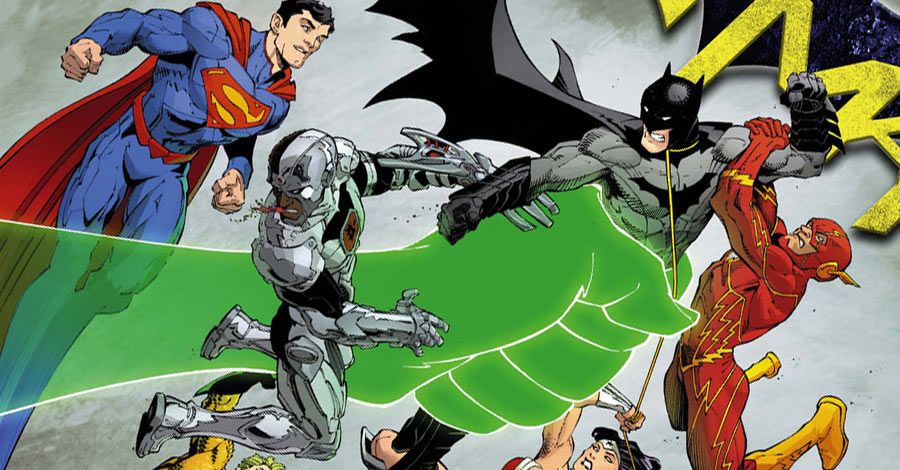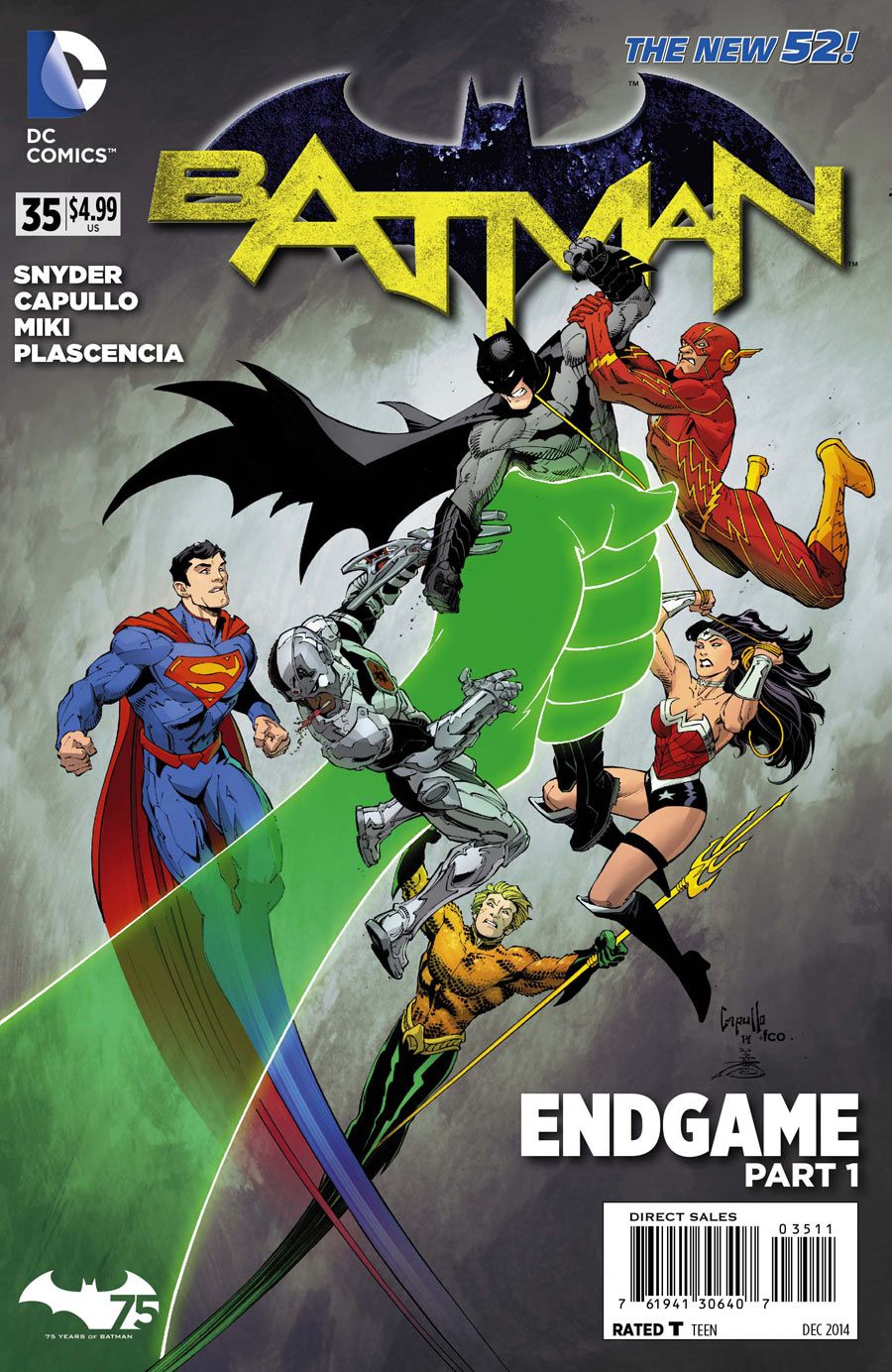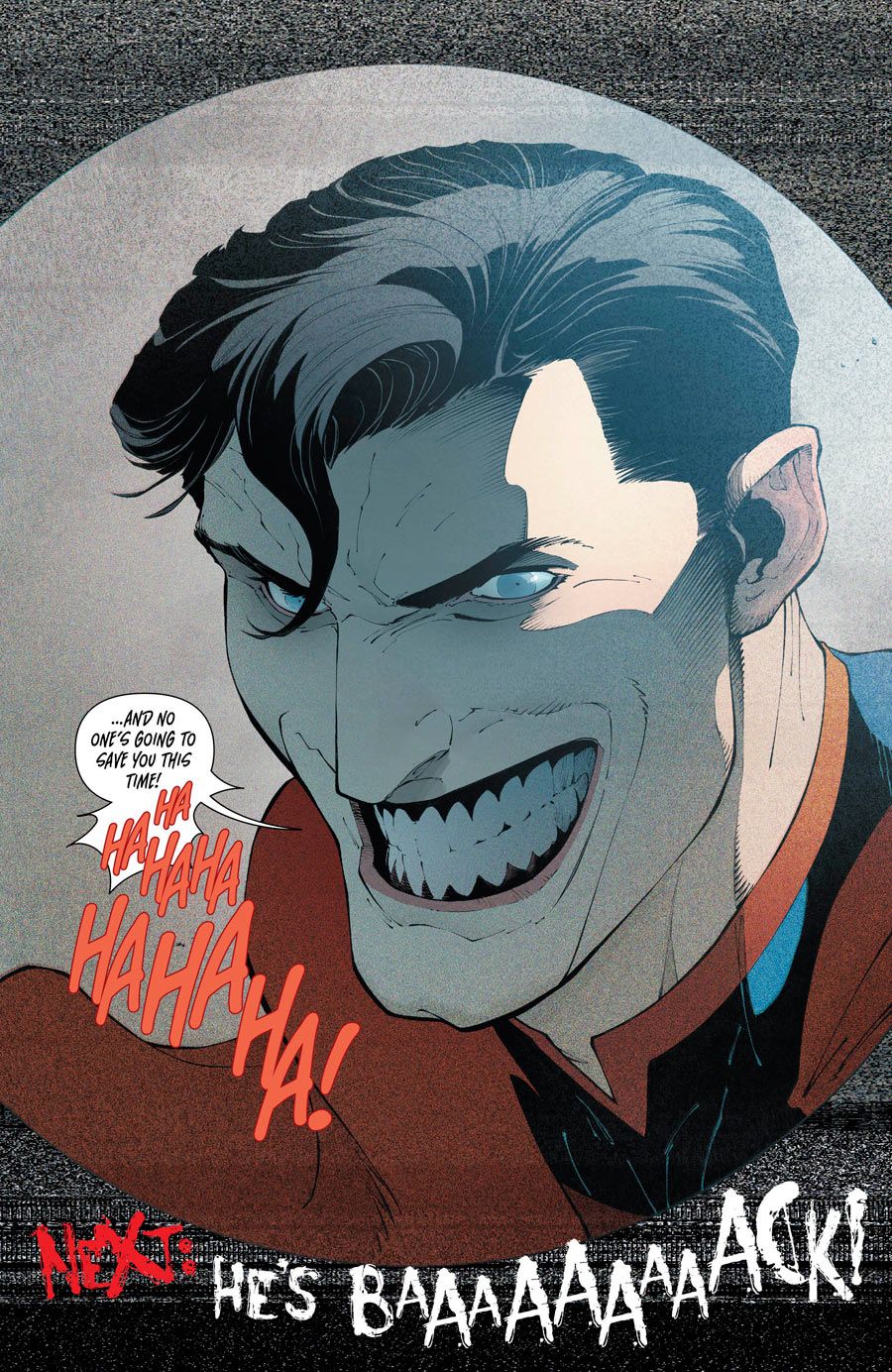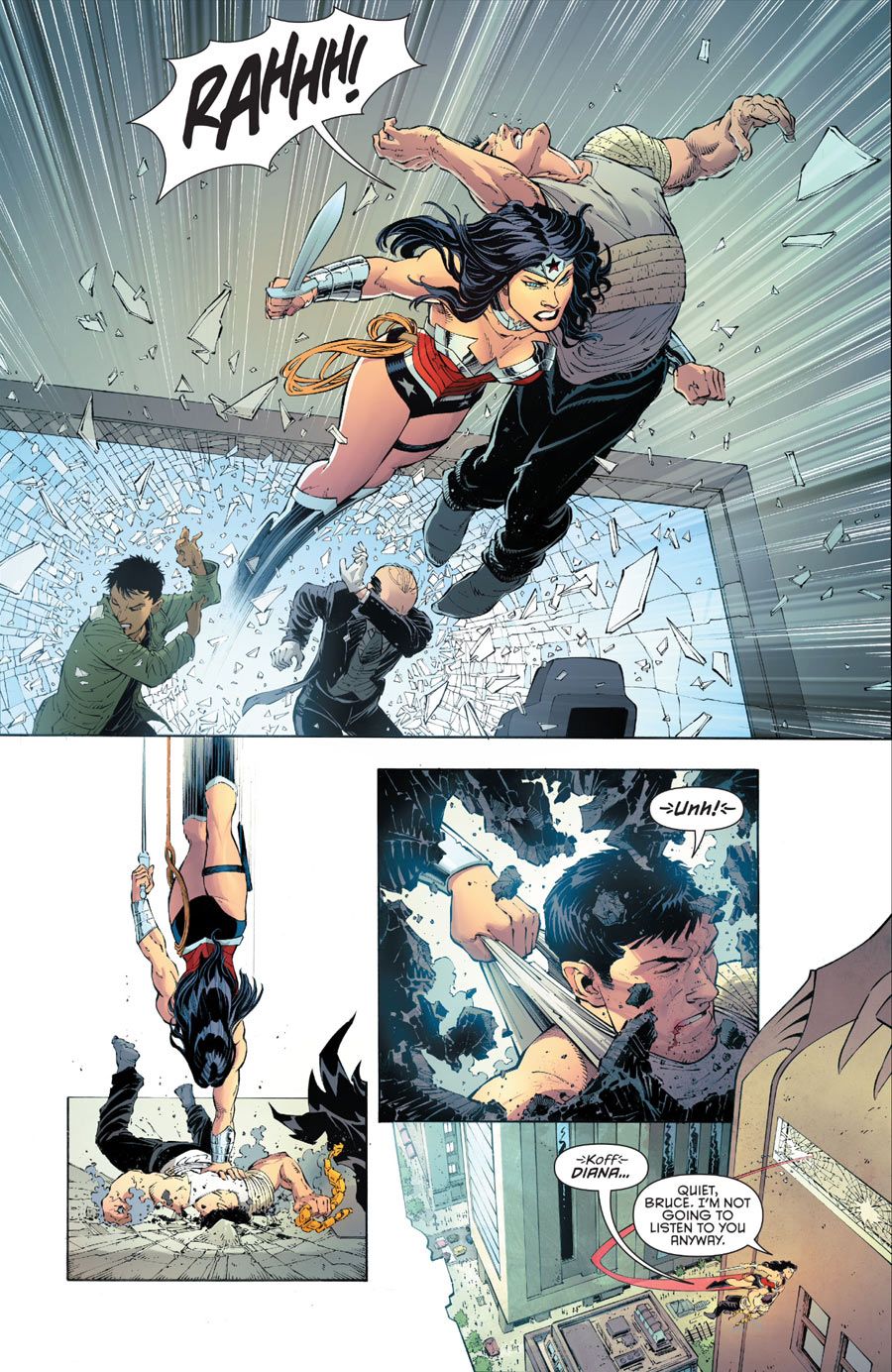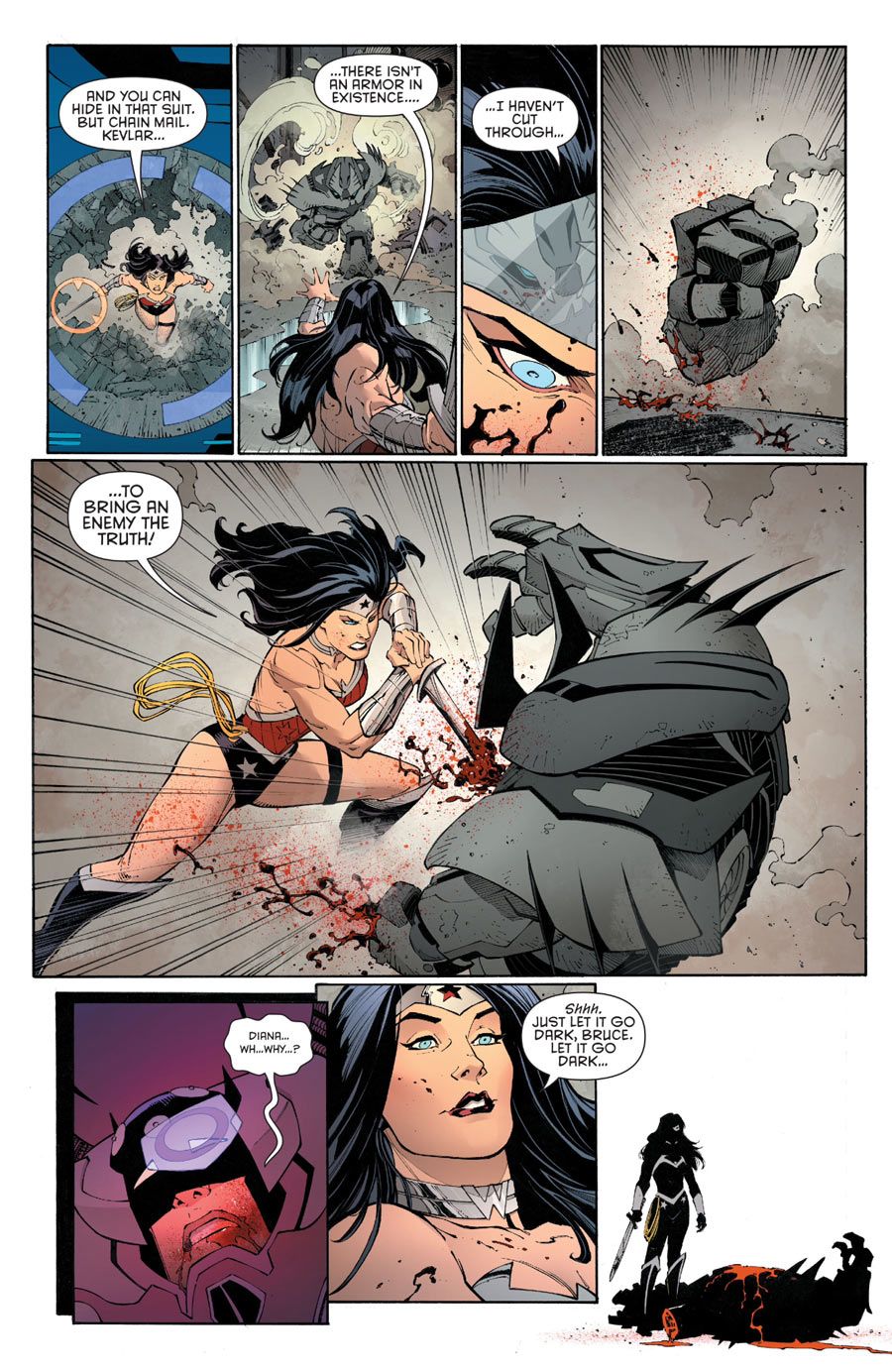SPOILER WARNING: This article contains major spoilers for "Batman" #35, on sale now.
You've probably heard by now that 2014 is Batman's 75th anniversary. One thing that's been missing from that celebration thus far is his perennial archenemy the Joker, who hasn't been seen in DC Comics' storylines since 2012's "Death of the Family" by writer Scott Snyder and artist Greg Capullo -- where the Clown Prince of Crime attempted to craft a fatal schism in the Bat-family.
Miller, Snyder, Lee & More Celebrate Batman's 75th Birthday
With this week's "Batman" #35, Snyder and Capullo launched "Endgame," a six-part storyline that had been shrouded in mystery before release. And now readers know why: In the last page, it's revealed that Joker is back, and apparently has raised the stakes: Controlling a Joker-ized Justice League targeting Batman, all part of a larger plan yet to be revealed.
CBR News spoke with Snyder -- whose Image Comics series "Wytches," illustrated by Jock, also debuted today -- about the issue, which he says is the first part of Joker "moving on" from Batman with one final plot. And given that the opening shot involved the combined powers of the Justice League, Snyder said things only get bigger from here.
CBR News: Scott, as revealed in the last page of "Batman" #35, the Joker is back! You wrote a major Joker story, "Death of the Family," not that long ago, in 2012. As that story closed, did you know you'd be coming back to the character at this point? Did you have these plans in mind, at least loosely?
Scott Snyder: I did. Really, it was when I began writing it that I realized it would need a closing act. It was just really a matter of when we were going to do it. While I was writing "Zero Year," I kind of had this thing in the back of my mind as a story that we'd eventually return to. It just became a question of what was the best time to actually launch into it. Ultimately, I thought about doing it about six months from now, but I kept looking at the date, being like, "It's Batman's 75th anniversary!" I remember one of my friends was like, "It's also Joker's 75th anniversary at the end of that." "You know what, we've got to do it. We've got to do it then."
It's something we've been looking forward to for a very long time. It's the conclusion, I think, to the arc for us with the Joker as a character that really began in "Death of the Family" in terms of his psychology.
How has the Joker changed at this point? Where do we find him in this story? If he's controlling a Joker-ized Justice League, that seems to be an upgrade.
He's changed a tremendous amount since the last time we saw him, and this story is really sort of an inversion of the other one -- we would never want to do something that felt, in any way, repetitive. For us, if that one was sort of a comedy, or was about him saying, "This story is all about friendship and love and this sense of immortality and you coming with me and your villains, who are your true family, who are your royal court -- we're the ones who transformed ourselves into these eternal figures, because we saw you do it, and we have transcended our bodies and death to become these things of legend and to give meaning to what we do" -- and Batman rejects all of that in "Death of the Family," where he says, "No, what makes me stronger is my humanity -- the people that love me and the people I love as Bruce Wayne." In doing so, he severed all ties with the Joker.
This time, the Joker's back to say, "Actually, your life means nothing. Your life is a joke, and the fact that you think that it has any kind of significance or meaning, what you do, and that it has an effect on things in the greater picture, is laughable, and I'm here to prove that to you." So this one is really about hate. [Laughs] And death and suffering -- tragedy as opposed to "Death of the Family." If that one was happy, this one is sad. But, that said, it's not going to be centered on a character dying or going after one person -- Joker's really here to say, "I am out for all of you. I'm here to burn everything down this time."
When the story was first announced months back, all that was really revealed was the title: "Endgame." It was clear both you and DC were not looking to disclose anything further. Now that the first chapter is out, can you tell us if this is this Joker's endgame against Batman -- or the world at large? What can you share about the significance of that title, now that we know Joker's the villain?
Joker's saying, "This is the end of us. This is it. This is the last Joker story of 'Batman and Joker.'" Joker is moving on, is what Joker would say. So it's really the end of the game played between the two of them.
For him, he's funeral. He's ready to end everything with Batman. For us, it's incredibly fun to write him in this psychological state, because it's no-holds barred. It's the kind of thing where nobody is precious, no one matters, he's out to prove a point and to make Batman feel like his life is meaningless. In that way, he's incredibly vicious and incredibly fun.
His plan is huge -- you can imagine, if we open with the Justice League Joker-ized, we're not going to go smaller from there. [Laughs] It's very, very big, and very out of control, and a lot of fun to write. I don't want to say I'll never write the Joker again, because I always feel like you do that, and then 10 years down the line you get some opportunity and you become a hypocrite about it. But I would say this is really the concluding chapter for us for the Joker, given the relationship we've created between him and our version of Bruce Wayne, for this run of "Batman."
You say things are going to get bigger, and already in this issue, we're seeing the Justice League, and the scale of it already seems to be on a different level. You've told very big stories in "Batman" so far, but a lot of those stories were very personal, and also Bat-universe-centric. This feels like maybe a bigger, superhero "DC" story. Is that fair to say?
I don't want to give the impression that it's going to pull in people from all corners of the DCU. I'm not up for that kind of story in "Batman" right now. The reason that Joker pulls the Justice League in is to send a very specific message -- and it is a warning shot. The story gets bigger from there.
That said, the cast is pretty Batman-centric going forward. You're going to see some people I think that will surprise you; good and bad, new and old. It will involve everybody in a way that I think we haven't really had a chance to do as widely as this story will do it.
Really, it's a celebration of Batman and Joker's 75th anniversary in that way, where we're trying to show how far-reaching their influences are on other characters, how big their relationship is, how long a shadow it casts over Gotham in general and the DCU.
The timing of the story is noteworthy -- it's made clear that this is happening after "Batman Eternal," which is an interesting choice since that weekly series is just now reaching its halfway point. What's the significance for you of placing "Endgame" at that point in the story?
There are certain elements that come out of "Batman Eternal" that we wanted to be able to play with here. For example, Arkham Manor -- there are things you're going to see that "Eternal" actually fuels our story.
But really the point was to try and give that series, and all of the Bat-series, room to function singularly. One of things we've tried to do with "Batman" from the beginning, from "Court of Owls" to now, is to give other books the opportunity to tie-in if they wanted, but not to force anything we're doing on them. Here, part of the fun of starting at the end of "Eternal" rather than somewhere in "Eternal" -- or starting in some point that "Batgirl" and all of these books would immediately have to tie-into -- is to give elbow room to each book to have its own character, to have its own arc, to have its own personality, and still reflect a shared universe. You see the changes brought on by "Eternal," and hopefully it will fuel interest in "Eternal" for people who want to know, "Why are these things changed the way they are?"
At the same time, we want to design it so you can pick up "Endgame" -- and I'm pretty confident we've done this -- and read it without knowing anything about "Eternal" and be fine.
It's a tricky balance.
It is. It's definitely a balance, and I'm sure we stumble at times -- our goal is for each book to have its own world, have its own personality, but reflect a shared universe. We don't want to crowbar anything into any book. This was the best choice, I thought -- to reflect the changes coming from "Eternal," so it would drive interest in "Eternal," but wouldn't step on that series' toes, and wouldn't step on any of the new series that we're launching this month, either, that we're really excited about -- from "Arkham Manor" to "Gotham Academy' to the new "Batgirl."
Each arc on your "Batman" run with Greg Capullo has had a distinct visual identity -- and so far, this one looks a little different from the others you've done thus far. What can you say about what Capullo is bringing to this arc, and the different visual opportunities that this story provides that readers haven't seen from the two of you before?
"Death of the Family," for us, was incredibly claustrophobic and dark and nightmarish, so there was a lot of sense of close spaces, hallways, cables, tiny rooms, darkness -- it was always nighttime. All of that stuff.
For this one, what we wanted to do was kind of invert that. So Joker is out in the daylight -- or out in the gloom of Gotham, which is essentially bright afternoon. It's like a good day in Gotham when it's raining.
But him out there in the midday celebrating his own return, with the city all around him, and this sense of space, a more muscular, bombastic story -- a story where he doesn't care about needling his way into Batman's world, he's changing the world himself, and he's waiting for Batman to come to him. A totally different visual landscape for Greg to play in. This one is spacious, it's out of control, it's very open, you get a sense of Gotham being very -- I'm trying to say things without giving anything away. I'm not at a loss for words, it's that I don't want to give away Joker's plan as it goes forward. But you'll see a very vast canvas, where "Death of the Family" was very centered on specific characters. It was more piercing.
[Capullo] has had some great opportunities, and FCO also, the colorist, and Danny [Miki, the book's inker]. We have different mission statements for each one. "Zero Year" was meant to be highly technicolor and punk rock, to invert "Year One" and not to use the gloomier, realistic colors that we had used in "Court of Owls." This one is meant to be like a kaleidoscopic use of color and art. Where the first one was black, horror, grisly; this one is, Joker's just sort of there, taking everything he wants. So there's a sense of scope to it that I think will be reflected in the art and coloring.
And wait until you see Greg's design for Joker. It's just awesome. It's very distinctive, too. [Laughs] I already see it and I'm like, "Oh my god, I haven't seen the Joker look like that." It's very good. I really like it.
Is his face going to be reattached?
Well, his face is over with Joker's Daughter. Although he has it at one point in this story -- spoiler! I would imagine he would need a face. I wouldn't have him walking around with a mask, or something like that. Without giving too much away, I think it's safe to bet that he will probably have a face of some kind, yes.
Also wanted to ask about the back-up stories written by James Tynion IV for this arc, with the one in #35 rather moodily drawn by Kelley Jones. What can you say about the plan for those back-ups, and how they're working in tandem with the main narrative?
They're great. They're connected to the main narrative in that they follow the things that are happening to Gotham, and are happening to the characters that you see in "Batman" itself. But essentially James' mission when we discussed them, we talked about the possibility of him doing five stories really that give different origins for the Joker. Different tales of how he is capable of doing what he does, and who he is. That's the narrative there -- even though it has a plot, and it has a very dark place that it's going.
It's also a celebration, artistically, of great Batman artists both past and present. So you'll see that people that I think you'll really be excited and shocked to have return to Batman in different capacities. It really is like a big birthday party for Joker and Batman -- though they would argue whose birthday it really is. [Laughs]
"Batman" #35, the first part of the six-issue "Endgame" arc, is on sale now.

